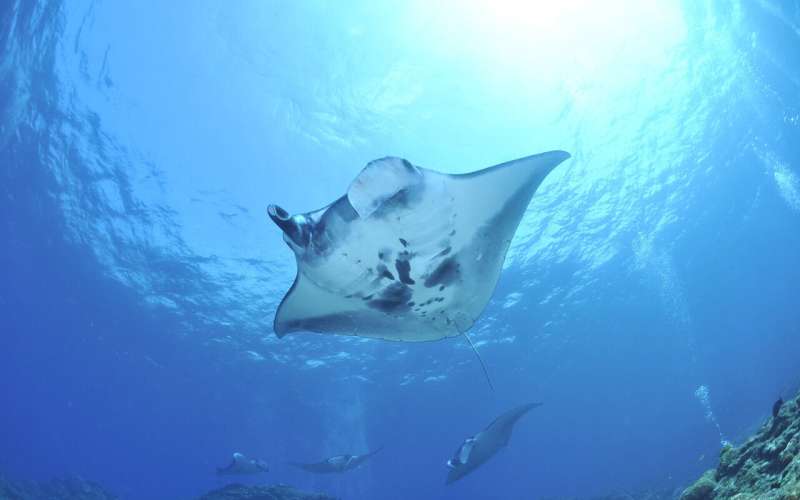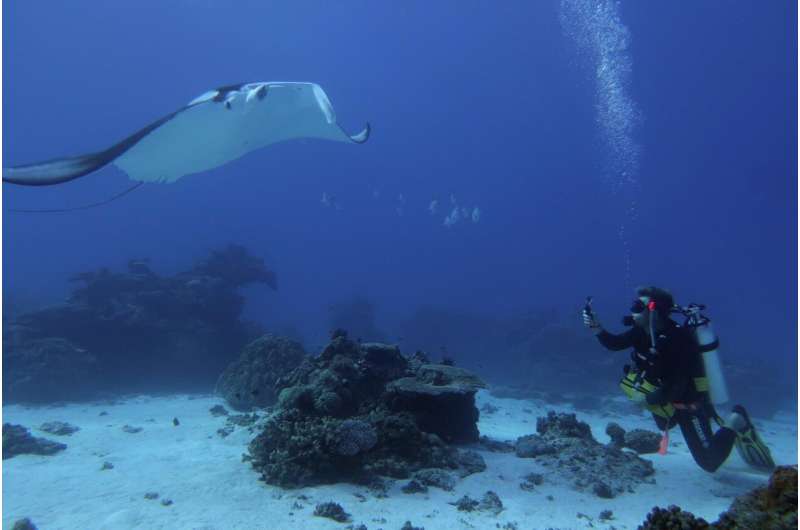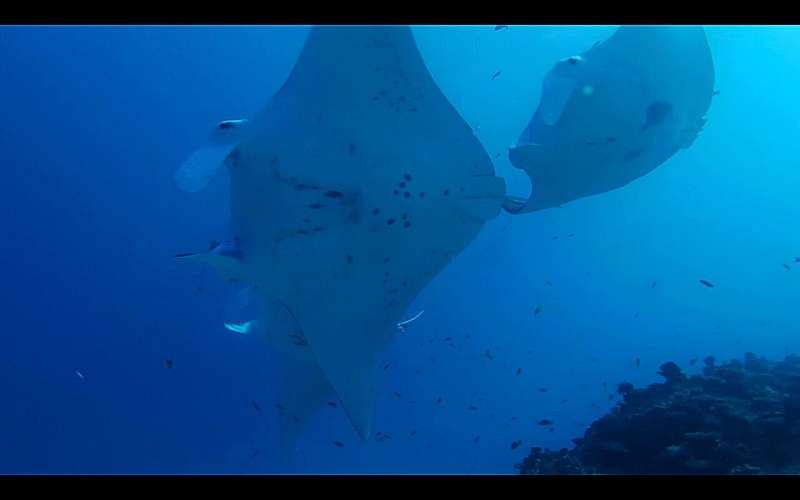Citizen scientists offer ray of hope

Volunteer snorkelers and scuba divers have been helping capture images of reef manta rays to better protect the threatened species.
The University of Queensland initiative—Project Manta—relied on these citizen scientists to photograph or video individual reef manta rays (Mobula alfredi) across Australia's east coast.
UQ Ph.D. candidate Asia Armstrong, who led the study, hopes the data will inform conservation planning and management along the coast.
"Manta rays are a great ambassador species for conservation," Ms Armstrong said.
"Everyone loves them, and they offer a wonderful platform for getting people involved in marine conservation, as people protect what they love.
"With Project Manta, we relied on the cameras and eyes of both trained researchers and volunteers, who helped us build a catalogue of more than 1300 individual reef manta rays, from in excess of 7000 sightings."
Once images and videos were captured, they were analysed to isolate the distances individual rays were travelling.
"Manta rays have a unique spot pattern on their belly, which allows individuals to be identified from one another," Ms Armstrong said.
"Each time an animal is photographed we record the date, time and location of the sighting, along with any additional information, like its sex, maturity status, injuries and behaviour.

"When a sighting is matched to an existing record we gain insights into the ray's movements and population dynamics."
The researchers were surprised to discover that individual rays had travelled from North Stradbroke Island to the wreck of SS Yongala, just south of Townsville, a distance of more than 1,000 kilometres.
"This is a record breaking point-to-point movement for a reef manta ray, improving our understanding of the potential home range for this species," Ms Armstrong said.
"Globally, reef manta rays are listed as vulnerable to extinction, so this information can help inform conservation planning internationally, particularly in regions where this species may be exposed to increased risks and threats.
"It's important now to connect with regional research groups to enable us to compare catalogues, which may reveal longer distance movements than those we've discovered.

"So far, there haven't been any records of cross-jurisdictional movements of this species—that is, movements between the waters of different countries—which is important to know for conservation planning.
"With the help of international researchers, along with passionate citizen scientists and conservationists, we can really improve the long-term chances for this incredible species."
The research has been published in Marine Biodiversity Records.
More information: Asia O. Armstrong et al, Photographic identification and citizen science combine to reveal long distance movements of individual reef manta rays Mobula alfredi along Australia's east coast, Marine Biodiversity Records (2019). DOI: 10.1186/s41200-019-0173-6
Provided by University of Queensland



















